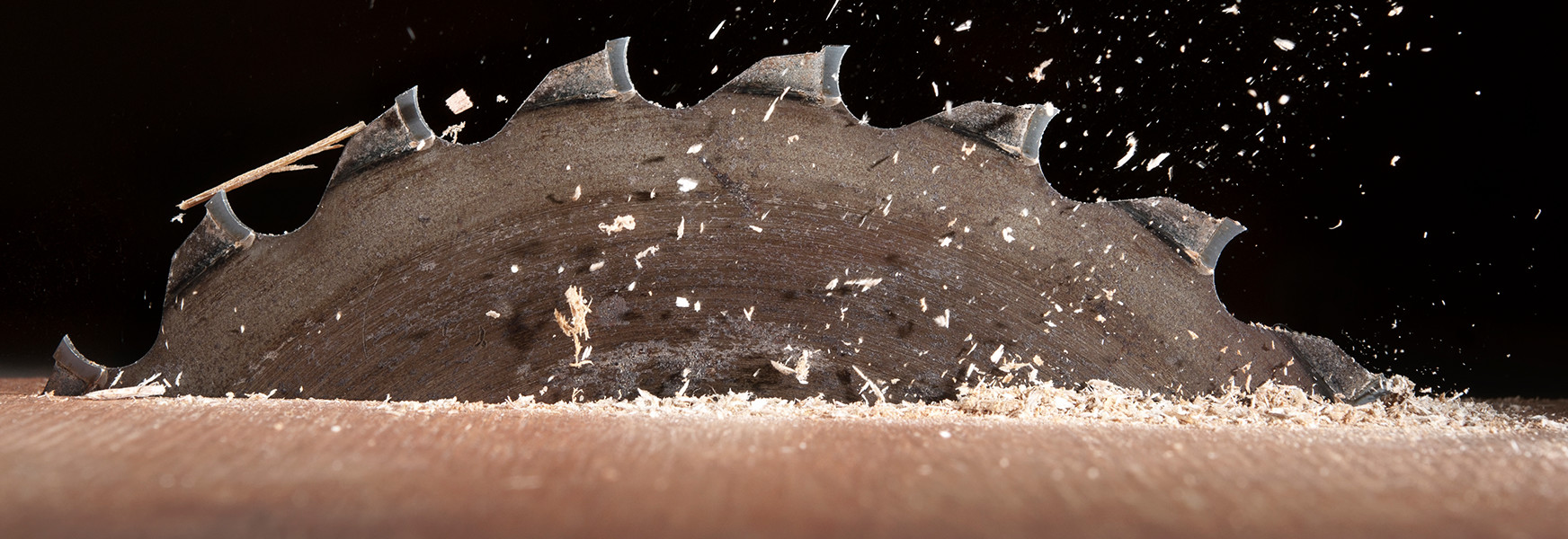Table Saw Safety

The table saw is one of the most widely used woodworking machines in today’s manufacturing processes due to its versatility, efficiency, and ease of use. Table saws can rip wood, cross cut, dado, miter, bevel, and even cut shapes and edging to create the finest of wood products.
However, if not used properly, the table saw can be one of the most dangerous tools in your “tool box.” The National Electronic Injury Surveillance System (NEISS) estimates there are an average of 38,000 table saw injuries annually. These injuries vary from simple lacerations to serious amputations which can cost millions of dollars in medical care and lost wages.

What can you do today to protect table saw users? Most importantly, you need to repair/replace any substandard equipment, offer applicable training, and enforce safety expectations. Consider the following safety tips for optimum table saw operation.
Before:
- Avoid loose fitting clothes - keep long sleeves above elbow, DO NOT WEAR GLOVES
- Wear ear and eye protection
- Be sure table saws are securely fastened to the floor and do not wobble
- Be sure blade is sufficiently affixed and tight
- Check blade guard and anti-kickbacks for proper operation, and check alignment of the riving knife (riving knife is preferred over standard splitter)
- Inspect wood before sawing - don’t cut wood with knots, warps, or twists
During:
- DO NOT start the saw with the blade engaged or touching the stock
- Always keep blade guard, riving knife, and kickback paws in place unless impossible (dado cuts)
- Be sure there is plenty of out-feed support at the back of the saw table
- Keep the saw table free of any other items
- ALWAYS use a “push stick” to guide smaller pieces toward the blade (your hands should NEVER be near the blade)
- Never reach over a moving blade
- Don’t saw freehand
- Use a miter gauge or a sled for crosscutting and the rip fence for ripping
- Never back a board out of a cut
- Always stand to the side of the blade when cutting, not directly behind the blade
- Unplug the saw whenever you perform a blade change or adjustment that puts your fingers in close proximity to the blade
- Always use dust collection system to control wood dust accumulation
After:
- Keep the saw blade clean and sharp
- Unplug the table saw when making adjustments/maintenance
By the way, there are several OSHA and Consumer Product Safety Commission (CPSC) standards that when followed will adequately protect employees from table saw injury. Unfortunately, these standards are often violated by employees and not enforced by management. OSHA’s Machine Guarding standard (29 CFR 1910.213) addresses table saw operation, and in 2005 the CPSC required that new table saws include a riving knife and modular guard to further prevent these injuries.
On April 27, 2017 the CPSC went a step further in issuing a notice of proposed rulemaking (NPR) requiring table saws to include advanced safety features that will limit injury to human flesh. The CPSC didn’t specify the manner in which the saw will do this, but did set a limit of a 3.5mm cut to a finger when contacting the spinning blade at one meter per second. It is presumed that technologies similar to what is currently available from SawStop will become the industry standard should this rule be adopted. Considering recent litigation between SawStop and Bosch over patent infringement this could be a long drawn out issue with no clear resolution. Regardless, the issue of table saw safety is clearly in the national conversation which should be beneficial to all users.
REMINDER
You are in charge of your own destiny! The choices you make will define your results… so make the right choice!
Additional information is available from OSHA in the Machine Guarding e-Tool and the Guide for Protecting Workers from Woodworking Hazards publication.
